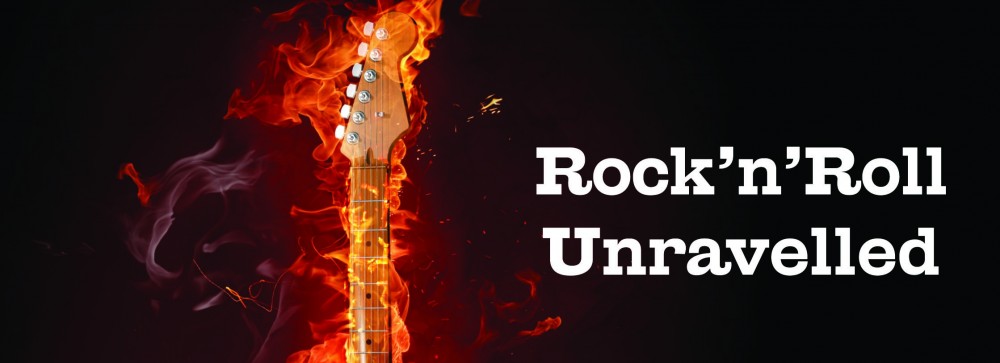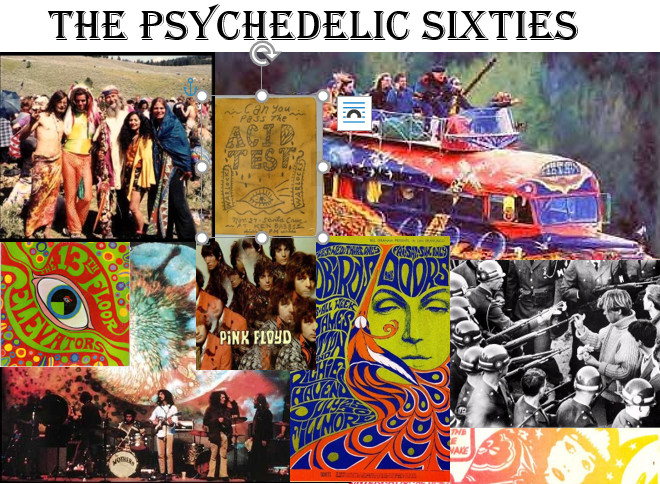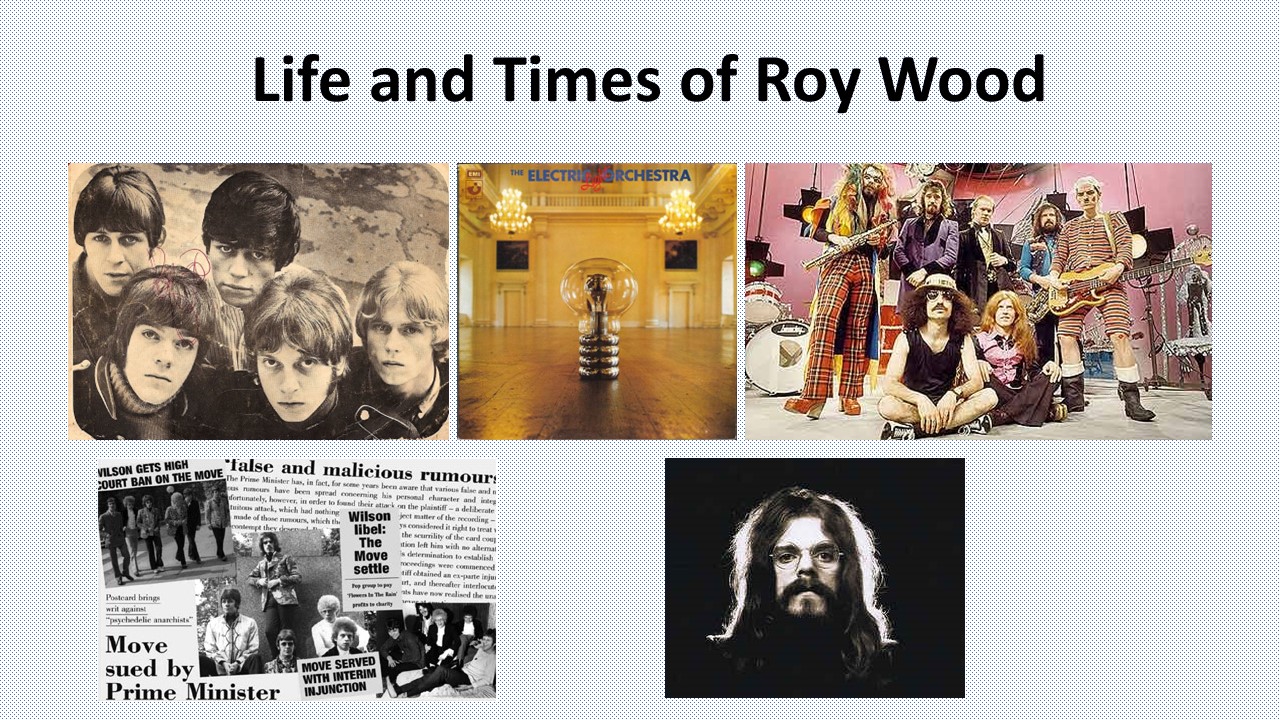The Psychedelic Sixties
The Psychedelic Sixties – Psychedelic rock was one of the first genres to emerge after the demise of beat music in the mid-1960s.
ON TOUR NOW
Check out which of the bands talked about in the show are on the road.
PODCAST
Associated with this blog
QUIZ
Associated with this blog
The Psychedelic Sixties
IT ALL STARTED…
Psychedelic rock was one of the first sub-genres to appear after the British Invasion, when British beat groups dominated the American music scene. In the mid-1960s beat music morphed into the harder-edged rock music.
The second half of the 1960s is the golden age of psychedelic rock. By the end of the 1960s the hits had dried up and by the early 1970s, psychedelic bands were history. This era also brought the first age of teenage counterculture.
WHAT IS PSYCHEDELIC MUSIC
Psychedelic music looked to replicate the hallucinogenic experience induced by drugs such as LSD and magic mushrooms. In concerts, the music was augmented with light shows and movies projected onto the wall behind the band.
Author Michael Hicks maintains that psychedelic music contains three elements:
Dechronicisation – to move outside the conventional perceptions of time.
Depersonalisation – to lose the self and gain an awareness of “undifferentiated unity”.
Dynamisation – a fluidity of structures; psychologist Timothy Leary suggested that it makes everything seem to bend as, “familiar forms dissolve into moving, dancing structures”.
BRITISH AND AMERICAN PSYCHEDELIC MUSIC
The approaches to psychedelic music were different on either side of the Atlantic.
British psychedelic music was multifaceted, incorporating, effects, time signatures, whimsical lyrics, keyboards and distorted guitars.
American psychedelic music was much more blues based, and less focussed on whimsy. Grateful Dead were in the vanguard of the genre and were famed for their long, meandering guitar solos
ORIGINS OF PSYCHEDELIC MUSIC
1938: LSD-25 synthesised by Albert Hofmann: LSD – lysergic acid diethylamide
1956: Humphrey Osmond coined the term “psychedelic” as a synonym for hallucinogenic drugs. He used it in a letter to Aldous Huxley.
1959: Ken Kesey took part in the CIA funded LSD experimental programme at Stamford University. The study, known as MKULTRA, was to examine the effects of psychoactive drugs. He also worked part-time in the same Menlo Park Veterans Hospital where the experiments were being carried out. Kesey used this background in his acclaimed novel One Flew Over the Cuckoo’s Nest.
EARLY REFERENCES TO “PSYCHEDELIC”
May 1960: The Gamblers (Los Angeles) released Moon Dawg! c/w LSD-25. (US)
Both sides of the single were instrumentals. LSD-25 is the first song to reference the drug LSD.
early 1964: The Holy Modal Rounders released their first album, The Holy Modal Rounders.
The duo, Peter Stampfel and Steve Weber, came together in mid-1963 in New York.
Their first album, The Holy Modal Rounders, contains the track Hesitation Blues. It makes an early reference to “psychedelic”, with the line “psychedelic feet in my psychedelic shoes … got the psychedelic blues”.
After releasing their second album, they teamed up with Tuli Kupferberg and Ed Sanders to become the Fugs.
1964: Ken Kesey and his Merry Pranksters Further trip
Ken Kesey and assorted friends made a journey of discovery across America, in a bus they named “Further”. The trip was intended to result in a movie but that was not released until much later.
Paul McCartney was inspired by Kesey’s trip and used the idea for the Beatles’ 1967 TV special, Magical Mystery Tour.
EARLY DAYS
late 1964: Quicksilver Messenger Service formed in San Francisco.
21 June 1965: The Charlatans started a residency at the Red Dog Saloon, in Virginia City, Nevada.
The band formed in San Francisco in 1964.
This was the Red Dog Saloon’s opening night and they became the venue’s first house band.
The Red Dog was one of the first psychedelic dancehalls and is still going strong today.
BRITISH BEAT GROUPS STARTED TO EMBRACE PSYCHEDELIA
30 July 1965: The Kinks released See My Friends (UK).
See My Friends is generally considered to be an early psychedelic single. It uses guitars to simulate the droning sound of Indian raga music.
It precedes the Beatles’ 1965 Rubber Soul track, Norwegian Wood, which was the first pop song to use a sitar.
1 October 1965: The Yardbirds released Evil Hearted You. (UK)
Evil Hearted You is sometimes considered to be the first psychedelic sounding British song.
BIRTH OF PSYCHEDELIC MUSIC
27 November 1965: First Acid Test event, held in Santa Cruz.
Ken Kesey and His Merry Pranksters held the first of their public LSD laced Acid Tests. This event is often referred to as the birth of psychedelic rock. LSD spiked orange juice, known as Electric Kool Aid, was on sale at the event. At this time LSD was still legally available across all the US states.
The Warlocks played at this Acid Test, just before changing their name to the “Grateful Dead”. They were regular performers at other Ken Kesey organised Acid Tests.
IN AMERICA IN 1966
On the East Coast
13 January 1966: Velvet Underground’s first gig with Nico.
Velvet Underground were a part of Andy Warhol’s multi-media experience – Exploding Plastic Inevitable.
On the West Coast
10 February 1966: 13th Floor Elevators – early review describing a band as “Psychedelic Rock”.
The day after they played the New Orleans Club, in Austin, Texas, the local newspaper, The Austin Statesman, reviewed the gig under the headline, “Unique Elevators Shine With ‘Psychedelic Rock”.
Pioneers of psychedelic rock, they called their first album The Psychedelic Sounds of the 13th Floor Elevators. Guitarist and legend, Roky Erickson shaped the group’s sound.
18 July 1966: The Byrds released their third album Fifth Dimension. (US)
The album contains Eight Miles High and is sometimes referred to as the 1st psychedelic record.
November 1966: The Electric Prunes released I Had Too Much to Dream Last Night. (US)
This single gave them their first hit on both sides of the Atlantic.
IN THE UK IN 1966
mid-1966: The Incredible String Band released their first album The Incredible String Band.
October 1966: Gig to launch the UK’s 1st underground newspaper, International Times (known as IT).
This event, at London’s Roundhouse, established Pink Floyd’s reputation.
14 October 1966: Pink Floyd’s first “underground” performance.
The gig, at All Saints Hall in London’s Powis Gardens, was an early example of the Floyd augmenting their music with psychedelic effects and mixed media.
British psychedelia had arrived.
23 December 1966: UFO club opened in Tottenham Court Road, London.
Joe Boyd and Hoppy Hopkins established the venue as the UK’s first psychedelic club.
EARLY 1967 IN AMERICA
The psychedelic era was a meeting of minds between the 1950s beat-generation beatniks, Allen Ginsberg, Jack Kerouac, William S Burroughs, et al and the hippies of the psychedelic generation.
1967: Timothy Leary released the album Turn On, Tune in, Drop Out.
Timothy Leary was a psychologist, writer and LSD advocate. A legion of 1960s hippies heeded his counter-culture advice to “turn on, tune in, drop out”.
14 January 1967: Pow-Wow: A Gathering of The Tribes Human Be-In
The Haight-Ashbury district of San Francisco became the centre of the hippy universe. A new law in California banning the use of LSD inspired the Be-In, which was held in San Francisco’s Golden Gate Park. It brought the beat generation and hippie cultures together, with beat poet Allen Ginsberg, LSD guru Timothy Leary and counter-culture figure Jerry Rubin in attendance. Grateful Dead, Quicksilver Messenger Service and Jefferson Airplane provided the musical backdrop.
1 February 1967: Jefferson Airplane released their second album Surrealistic Pillow. (US)
The album includes two of the anthems for the era, White Rabbit and Somebody to Love.
COMMERCIAL BREAKTHOUGH IN THE UK
10 March 1967: Pink Floyd released their first single Arnold Layne. (UK)
Syd Barrett wrote the song and it was produced by Joe Boyd, co-founder of the UFO Club.
17 March 1967: The Jimi Hendrix Experience released their second single Purple Haze. (UK)
Released on the Polydor label, Jimi Hendrix wrote the song, which was the follow up to their debut single Hey Joe.
The Who’s managers, Kit Lambert and Chris Stamp founded Track Records and Purple Haze was the first release on the new label.
29 April 1967: 14-Hour Technicolor Dream
The infamous British freak-out, 14-Hour Technicolor Dream, took place at north London’s Alexandra Palace.
Some reports suggest that 10,000 people attended the event, held because the International Times was facing prosecution and needed money for its defence.
A flier at the time described the event as, “London’s Own Hip Newspaper The International Times Presents Giant Benefit 14-Hour Technicolor Dream, 30 Top Groups, Kaleidoscopic Colour, Beautiful People … Followed by Free BE-IN on Sunday … Tickets £1”. This two-stage, mixed media happening, delivered a mixture of light shows, music and poetry.
The bill included: Pink Floyd (with Syd Barrett), The Crazy World of Arthur Brown, The Move, Alexis Korner, Graham Bond, Yoko Ono, The Pretty Things, Soft Machine, John’s Children (featuring guitarist Marc Bolan), and The Creation.
TWO CLASSIC UK SINGLES
May 1967 saw the release of two classic singles.
Traffic released Paper Sun.
Stevie Winwood formed Traffic after he left the Spencer Davis Group.
12 May 1967: Tomorrow released My White Bicycle. (UK)
They changed their name to “Tomorrow” at the end of 1965, after previously being known as the “In Crowd”.
The lineup included:
Singer Keith West – co-wrote the song.
Guitarist Steve Howe – went on to join Yes.
Drummer Twink – with Pretty Things long enough to record the classic album SF Sorrow in 1968 and went on to Pink Fairies.
IN AMERICA
April 1967: Thee Sixpence released Birdman of Alkatrash c/w Incense and Peppermints.
This was Thee Sixpence’s fifth single on the All American label. (All American Label also released the same coupling, with the band credit as “Strawberry Alarm Clock”.)
They changed their name to “Strawberry Alarm Clock” and moved to the Uni label.
19 May 1967: Strawberry Alarm Clock released Incense and Peppermints c/w The Birdman of Alkatrash. (US)
With the move to Uni, they flipped the two sides of their last single on All American. This proved to be a good idea, and gave them their first American hit single, a #1.
They failed to find success in the UK and only had one more hit in America Tomorrow, #23 in January 1968.
MEANWHILE IN THE UK
10 February 1967: The Smoke released My Friend Jack. (UK)
A classic piece of British psychedelia, with lyrics including, “My friend Jack eats sugar-lumps”. (LSD was often taken absorbed in sugar-lumps.) This obvious reference to LSD ensured that the BBC banned single.
1 June 1967: The Beatles released Sgt. Pepper’s Lonely Hearts Club Band. (UK)
The album contained the track Lucy in the Sky with Diamonds and at the time it was thought to be a reference to LSD. John Lennon later provided a different background to the song’s title. His son Julian had painted a picture of his four-year-old friend Lucy O’Donnell and called it Lucy in the Sky with Diamonds.
By the time that the Beatles released Pepper, they had already moved towards psychedelia with their two previous albums. In 1966 Revolver included, Tomorrow Never Knows and 1965’s Rubber Soul included Norwegian Wood – the first pop song to feature a sitar.
ATTEMPT TO LEGALISE CANNABIS IN THE UK
24 July 1967: Full-page advertisement to legalise pot, in UK newspaper The Times.
The Beatles funded the full-page advertisement, calling for marijuana to be legalised. The ad was prompted by the jailing of John Hopkins, founder of the International Times and London’s 1st psychedelic venue, UFO Club.
It suggested that the law against marijuana was immoral in principle, unworkable in practice and suggested a plan for reform.
Sixty-four dignitaries signed the petition including: all four Beatles and their manager Brian Epstein, the editor of the Leninist periodical Black Dwarf Tariq Ali, broadcaster David Dimbleby, painter David Hockney, photographer David Bailey and Beyond the Fringe member Dr Jonathan Miller.
5 August 1967: Pink Floyd released their first album Piper at the Gates of Dawn. (UK)
Syd Barrett wrote ten of the tracks, including 2 in collaboration with the rest of the group. Roger Waters wrote the only track without a Barrett writing credit, Take Up Thy Stethoscope and Walk.
The album’s title comes from Chapter Seven of one of Barrett’s favourite books, Wind in the Willows by Kenneth Grahame.
The track Chapter 24 was inspired by the 5,000-year-old Chinese tome, I Ching: The Book of Changes.
Syd Barrett designed the rear cover.
Norman Smith, who had recently parted company with George Martin, produced the album. During his time with Martin he worked as engineer on all the Beatles output, up to Rubber Soul.
23 September 1967: Tyrannosaurus Rex made their live debit at Middle Earth.
This psychedelic folk duo comprised Marc Bolan and Steve Peregrine-Took.
DEATH OF PSYCHEDELIC ROCK
In the October of 1967 three events signified the impending demise of psychedelic rock.
6 October 1967: UFO club closed its doors.
It opened on 23 December 1966 and failed to reach its first anniversary.
6 October 1967: Death of Hippie march, San Francisco
The residents of San Francisco’s Haight-Ashbury district organized the march to mark the end of an era. It was staged as a mock funeral, with a coffin for an imaginary character – “Hippie”. Killed off by overexposure and rampant commercialism, it marked the passing of the genuine article. Haight-Ashbury told aspiring flower children to stay at home and take the hippie message to their neighbours.
Haight-Ashbury had become the centre of the hippie world. The drug-fuelled hippie philosophy was one of free love, in a sharing, communal society where money was meaningless. Sadly, this idea was hijacked by hip-capitalists. Hippie ideals were now big business.
Frank Zappa and the Mothers of Invention were recording the final sessions for We’re Only in It for the Money, a parody of the Beatles’ Sgt Pepper. The phoney hippies found themselves an integral part of Zappa’s satire on American society.
October 1967: Melody Maker article Who Killed Flower Power
The article suggested that the psychedelic era was passing. To be replaced by the back-to basics, hard-hitting R&B based rock bands, such as the Groundhogs and Ten Years After.
ESTABLISHED BANDS WERE EMBRACING PSYCHEDELIA
November 1967: Love released their third album Forever Changes.
This is a highly rated psychedelic album, mostly written by Arthur Lee. Mojo magazine rated it as the #2 best-ever psychedelic album; #1 being the Jimi Hendrix Experience’s Electric Ladyland, released in October 1968.
2 November 1967: Cream released their second album Disraeli Gears. (UK)
The album contains the acclaimed Sunshine of Your Love, written by Jack Bruce, Pete Brown and Eric Clapton.
December 1967: Traffic released their first album Mr Fantasy.
8 December 1967: The Rolling Stones released Their Satanic Majesties Request. (UK)
Psychedelia did not suit everyone who ventured into the genre. This was the first Rolling Stones album to attract a mixed reception from fans and critics alike.
19 April 1968: Tyrannosaurus Rex released their first single Debora. (UK)
Marc Bolan wrote the song, which was produced by Tony Visconti.
The psychedelic-folk duo was not well received initially but found a champion in DJ John Peel. With his help they soon gained strong underground following.
Marc Bolan went on to find fame with T.Rex in the 1970s world of British glam rock.
May 1968: Quicksilver Messenger Service released their first album Quicksilver Messenger Service.
The band formed in late 1964 and are a good example of a band who found commercial success, after record companies saw the dollar signs and potential in psychedelic music.
BUT IT WAS ALL FALLING APART
Mid-1968: The Electric Prunes split up.
24 October 1968: LSD was made illegal across America.
In October 1966, California was the first state to make LSD illegal. The rest of America followed. The final nail in LSD’s coffin came with the passing of the Staggers-Dodd Bill.
Psychedelic music aimed to simulate the effects of hallucinogenic drugs. The banning of LSD brought the era to its natural close.
1969: The Charlatans split up.
1969: Roky Erickson pleaded insanity to avoid a jail sentence, when he was caught with a single joint.
He may have avoided jail but was committed from 1969 to 1972.
His departure essentially marked the end of the 13th Floor Elevators.
early 1970s: Strawberry Alarm Clock fell apart.
Ed King left in 1971 and joined Lynyrd Skynyrd in 1972, as the replacement for bass player Leon Wilkeson. When Wilkeson returned, King became the group’s third guitarist.
1972: Quicksilver Messenger Service parted company.
NEW GENRES EMERGED
It was all over for the psychedelic sixties but still an exciting time for rock’n’roll. Lots of new genres appeared in late 1960s and early ‘70s, with the appearance of, glam rock. heavy metal, space rock, jazz-rock fusion and others…


